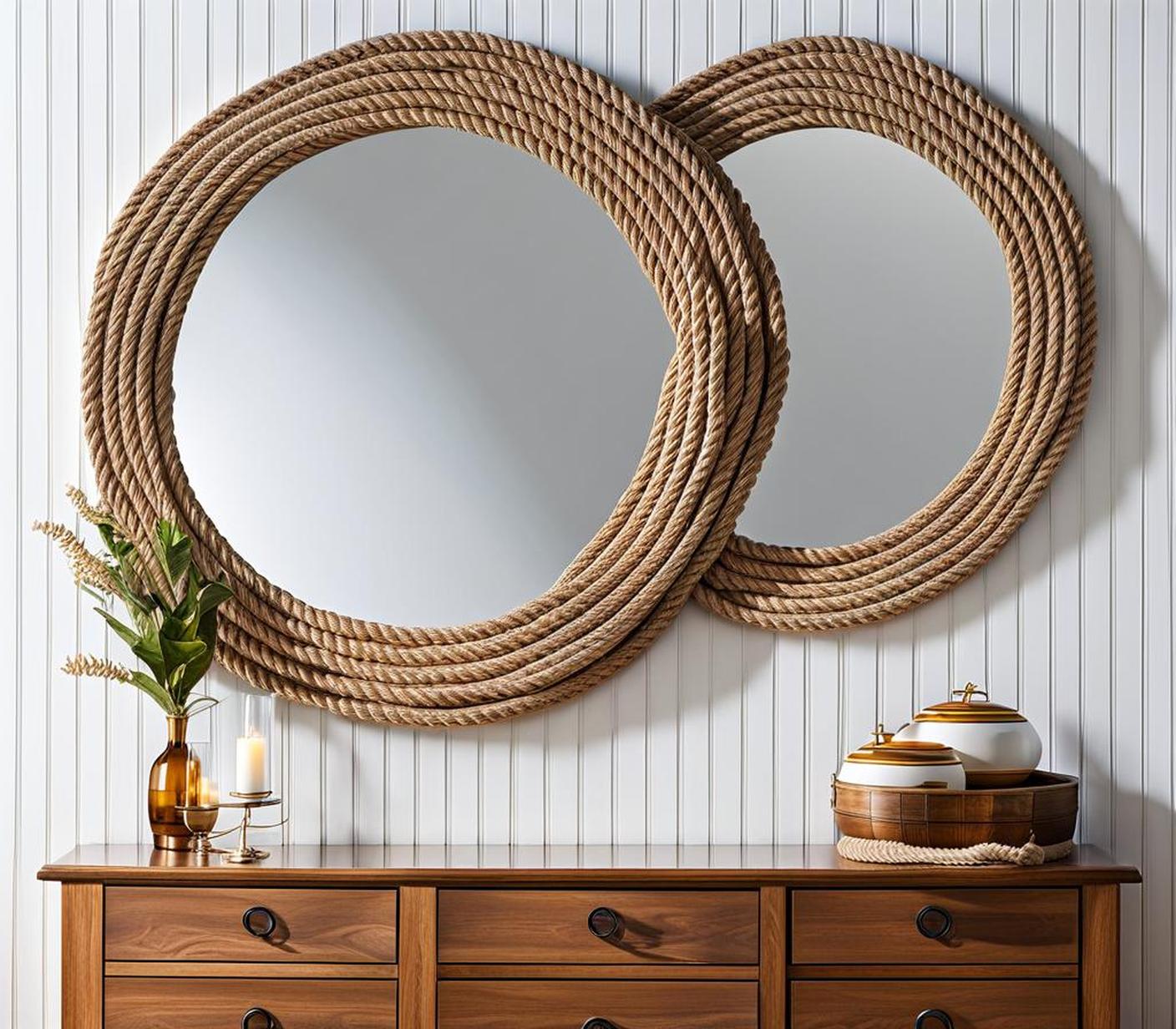Nautical decor never goes out of style. The natural textures and relaxed aesthetic are perfect for breezy coastal homes. If you love the salty seaside look, then you need to try making DIY rope mirrors.
Weaving and knotting rope is a time-honored maritime tradition. By incorporating this craft into mirror frames, you can achieve a uniquely styled accent piece. The handmade quality and rustic material textures align perfectly with cottagecore and modern farmhouse decors as well.
The History Behind Rope Mirror Design
Believe it or not, mirrors date back centuries in ship design. Early maritime mirrors utilized polished metals or glass to aid in navigation and communication.
Captains had ornate mirrors installed in their sleeping quarters. This inspired more decorative framed mirrors to adorn ship living spaces in the 1800s.
Knotting and Weaving Mastery
Sailors have long held expertise in knotting and weaving rope. This skill was essential for creating strong nets, rigging, and anchor lines on ships.

It seems only fitting then to incorporate these same rope techniques into nautical decor items. Thus beginning the trend of accent mirrors wrapped in woven or braided rigging.
Why Ropes Create Sturdy Yet Stylish Mirror Frames
At first glance, rope may seem an unusual choice for a mirror surround. But this natural material has many advantages over traditional wood or metal options.
Withstands Moisture and Sun Exposure
Rope holds up well to humid, seaside environments. The fibers resist swelling and decay better than unfinished wood frames. Ropes like jute, hemp, and manila can tolerate some UV exposure too.
| Moisture Resistant | Doesn’t warp or crack from humidity |
| Sun Exposure Durable | Can tolerate moderate UV light |
Striking Textural Contrast
The hand-woven rope texture makes an eye-catching counterpoint against the smooth mirrored glass. The fibers’ organic variation creates visual depth and dimension.
Hanging Loops Enable Relocation
Unlike fixed wood frames, rope ends can be tied into loops for easy hanging and removal. This means you can rearrange your mirror to suit changing decor tastes over time.
Types of Rope for DIY Projects
Ready to gather supplies for your own nautical mirror DIY? First, let’s examine some good rope options well-suited to home decors.
Jute
Jute has a soft, approachable texture and comes in natural tan and brown shades. Its casual appearance embodies the beach cottage vibe. Jute is also very affordable and simpler for beginners to knot or braid.
Hemp
Hemp rope has variation in width along its length, which adds visual interest. It has a light brown color that contrasts nicely against the reflective mirror surface. The durable fibers make it a sturdy frame choice.
Manila
Manila rope has a distinctive golden brown color and bold texture. Its weather-resistant properties also make it ideal for humid environments. Choose manila for a dramatic pop of color.
Get Creative Showcasing DIY Rope Mirrors
Half the fun of accent mirrors is finding clever ways to show them off. Here are some ideas on where to highlight your finished nautical mirror:
By the Entryway
Create a breezy coastal vibe right when you walk in the door. An entryway mirror lets guests check their appearance while soaking in the casual style.
In the Bathroom
Humidity is no match for rope surrounds. Add built-in towel hooks or shelves to make a functional vanity mirror. Display beachy soaps and candles to enhance the ambiance.
Behind the Bed
Lean a large round rope mirror against the wall behind a salvaged wood bed frame. Add accent pillows and textured throws to complement this cozy vignette.
Sustainable Aspects
Upcycling old boat ropes or rigging into home decor is a wonderful way to reduce waste. Many common rope types are also biodegradable, avoiding harm to marine ecosystems.
Repurposed Materials
Before discarding retired climbing ropes, dock lines, or netting, consider giving them new life as a mirror frame. It saves quality material from the landfill and reduces consumption of new resources.
Hopefully we’ve gotten you fired up to set course on making your own nautical rope mirror! It combines beginner crafting with eco-conscious principles for a rewarding weekend project.
The natural allure of woven textures with reclaimed maritime materials lets anyone achieve breezy coastal or cottage style. Just gather a few affordable supplies and unleash your inner sailor!
